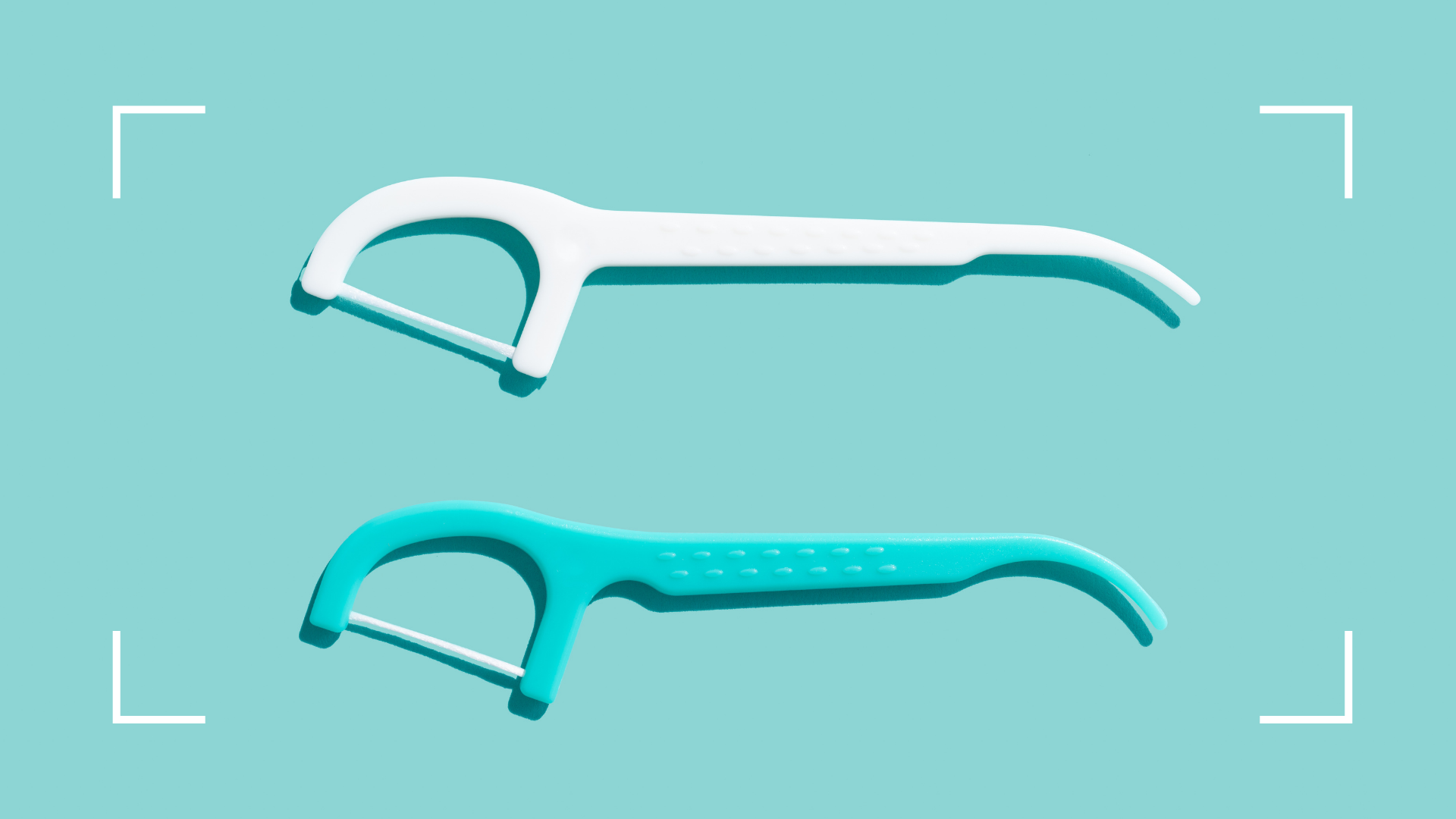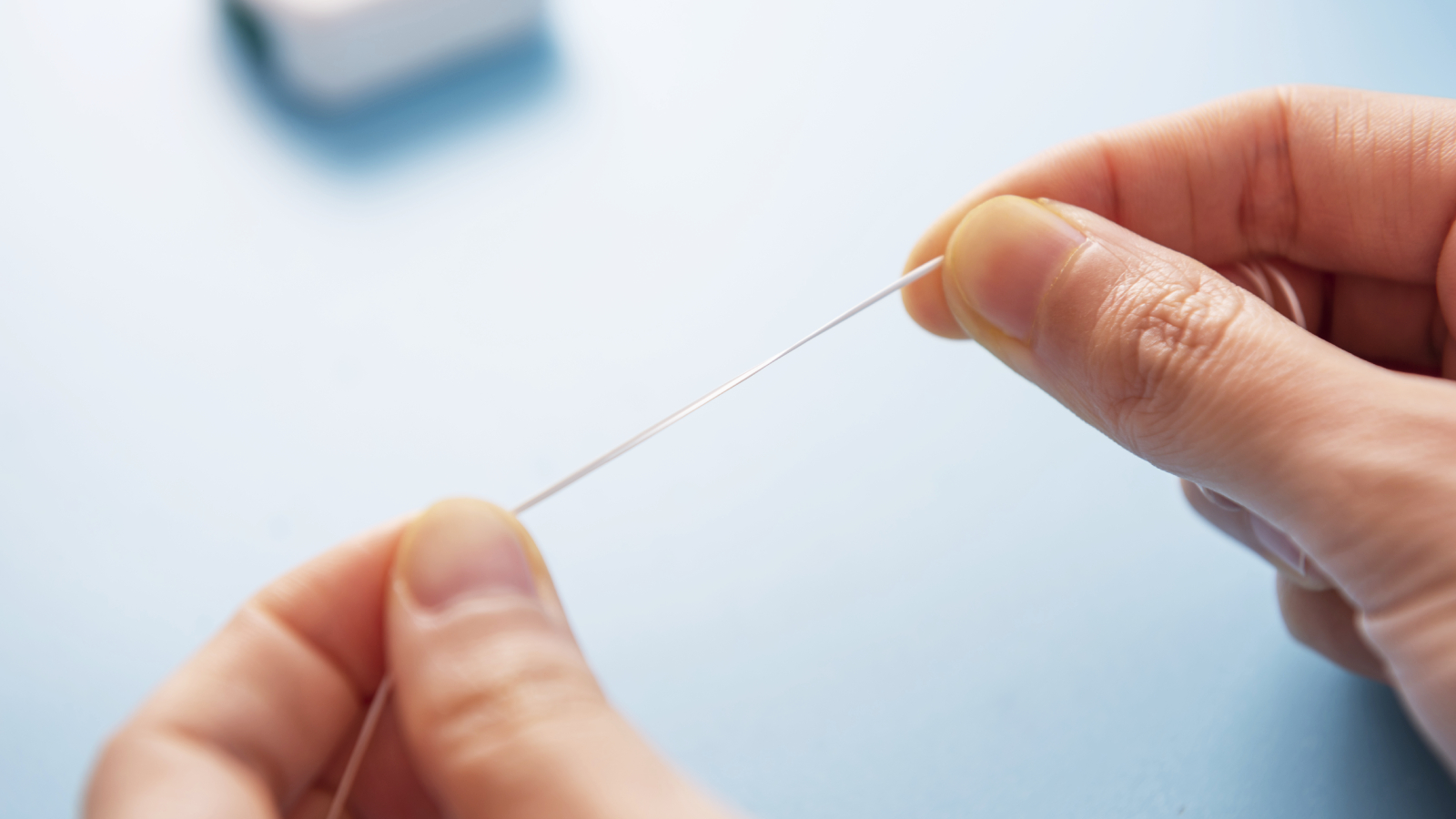How to floss your teeth properly to supercharge your oral care (even if you have braces or sensitive gums)
Our simple, quick instructions will help you learn how to floss your teeth in just 7 easy steps


Flossing—there’s a reason your dentist pesters you about it. Learning how to floss your teeth properly could save you hours in the dentist's chair later down the line. It really is worth making a non-negotiable part of your daily routine.
If you’re a really good brusher—that means you can skip flossing, right? Wrong. Just brushing your teeth alone isn’t going to cut it—although using one of the best electric toothbrushes certainly helps. Flossing is the only way to get all the bacteria out of your teeth and prevent serious dental problems. It's is an essential part of dental care, no matter how well you know how to brush your teeth.
Why flossing goes further than brushing alone
“A toothbrush is only able to brush the outsides, insides, and biting surfaces of the teeth—it physically cannot get between the teeth,” explains Dr Saul Konviser, general dentist at Montagu Dental. “Floss is the only alternative, as it physically disrupts the plaque build-up at the contact point between the two teeth.”
People who neglect to floss often see significant dental problems later in their lives. “The most common place for patients to develop dental decay is between the teeth, where plaque stagnates or gets caught,” says Dr Konviser.
Even if your teeth are really close together—or really far apart—food and bacteria can still get stuck in those little crevices. It can be hard to see, which is why it’s important to floss, even if you think you don’t need to.
Flossing is even more important as we age
Flossing is important at every age. Children should start flossing as soon as they have the dexterity to do so, and adults need to floss, too. It actually gets more and more important to floss the older you get. “Statistically, after the age of 30, there is a higher frequency of periodontal disease,” says Dr Casey Lau, a chief dental officer at Elims. But why is that?
“Changes in hormones, medications and even changes in routines leave women susceptible to gum disease and cavities,” says Dr. Yvette Carrillo, periodontist and implant surgeon. “Flossing between teeth removes the food and plaque and prevents inflammation and breakdown.”
Sign up to our free daily email for the latest royal and entertainment news, interesting opinion, expert advice on styling and beauty trends, and no-nonsense guides to the health and wellness questions you want answered.
How to floss properly

Flossing should become a part of your bedtime routine if you want to maintain good oral hygiene and keep your mouth healthy. There's no need for it to be a long-winded or difficult process.
The American Dental Association (ADA) recommends children and adults floss once a day and brush their teeth twice a day. Follow these simple steps and it will soon feel like a natural part of your day.
How to floss properly according to the experts:
- Break off around 20-30cm of floss—you'll want it to be long enough to establish a firm grip with your middle fingers, by wrapping the ends of the floss around them.
- Hold around 5cm of floss firmly—in between with your thumbs and index fingers and wrap it around two teeth.
- Make a 'C' shape with the floss—pulling the floss upwards.
- Gently rub the floss between the teeth—but be careful not to rub too vigorously as this can damage the gum area.
- Floss in a zigzag motion—covering the length of the tooth.
- Use a new piece of floss—as you move from tooth to tooth.
- Make sure you floss both sides of the tooth—and don't forget about the back!
When choosing your floss, thicker is generally better for a deeper clean. “If your oral condition is generally pretty healthy, you may want to try a floss that ‘grabs’ the plaque better,” says Dr Lau. “I usually recommend waxed floss. I also recommend the thickest one you are comfortable with because most of the time people opt for thin floss that doesn’t really scrub your teeth clean.”
You can supplement your flossing routine with other dental care, such as regular trips to the hygenist, and trying out techniques like oil pulling, which is said to help keep teeth clean and strong when carried out regularly.
Common flossing obstacles and how to fix them
We all know how important it is to floss, but what if flossing is particularly difficult for you? Many people face problems when flossing that make them want to give up on it together. But that’s not an option. Luckily, there are solutions to the obstacles.
How to floss with braces

- Use a floss threader—“In order to floss effectively, using additional tools like floss threaders make it easy to maneuver the floss around the braces and effectively target the areas between teeth,” says Dr Carrillo. To use a floss threader, you simply slip the floss through the tool and then use it to get under the wire part of the braces.
- Use a water flosser—“Water flossers also make it easy to remove food from the braces,” notes Dr. Carrillo. Water flossers shoot a thin, high-pressure stream of water between your teeth. Since you aren’t using a string, there’s no tricky maneuvering you have to worry about.
- Use interdental brushes—“We encourage our patients with braces to use interdental brushes to get between the teeth and give the gums a good scrub,” says Dr Konviser. To use an interdental brush, simply poke it right between your teeth, above or below the wire of your braces. You can also use it to clean out the braces themselves.
Flossing with braces may be a bit of a challenge, but a few considerations means it doesn't have to be an issue. If you're beginning your braces journey and want to learn more about types of braces, our guide to Invisalign vs braces explains the key pros and cons.
How to floss with sensitive gums
- Floss gently—“if done properly, flossing should not be a painful experience,” says Dr Konviser. “I would just ensure that patients are not trying to force the floss too deep into the gums and traumatize themselves. You only need to extend the floss just beneath the edge of the gum, as that is where the plaque often collects.”
- Choose textured floss—selecting a different floss could also solve your problem. “I prefer a floss that has some texture to it,” recommends Dr Lau. “If you find a floss that is more of a weave, you will get a ‘massaging’ of the gums,” which can feel less harsh if you’re experiencing sensitivity. You can always ask your dentist for recommendations for gentler floss.
- Consult your dentist—according to Dr. Lau, constant sensitivity while flossing could be a sign of infection. If discomfort or bleeding persists after flossing consistently for several days, it may be time to visit your dentist to rule out the possibility of infection. However, that is rare, and “usually the answer is floss more,” says Dr Lau.
Why do my gums bleed when I floss?
“Bleeding gums are usually a sign of unhealthy gums,” says Dr Lau. “It’s most often a sign of gingivitis.” It may sound counterintuitive, but if your gums bleed when you floss, it’s most likely because you aren’t flossing enough. To combat this, get into a routine of flossing every day and the bleeding should stop. If it doesn't it could be time to see your dentist.
“If patients are noticing regular bleeding of the gums, this should be a little red flag to suggest there could be early signs of gum disease,” warns Dr Konviser. “I would therefore recommend regular checks with the dentist and hygienist for a professional clean and some additional oral hygiene instruction and support.” It could be that your flossing technique is lacking. The dentist or hygienist can show you what you’re doing wrong and how to improve your flossing.
Whatever your obstacles to flossing are, you can get past them with some useful tools or changes to your flossing technique. No matter what, flossing once a day is essential to your oral health.
woman&home thanks Dr. Saul Konviser of Montagu Dental, Casey Lau of Elims, and Dr. Yvette Carrillo for their time and expertise.
Ciara McGinley is a meditation practitioner and health journalist. She qualified as a meditation teacher with the British School of Meditation in 2020 and is the founder of Finding Quiet, a series of classes, workshops and retreats that combine meditation practices and mindfulness techniques to make mindful living realistic in an always-switched-on modern world. She is all about bettering that mind-body connection but believes wellness looks different to everyone.
Ciara is also the former Health Channel Editor at woman&home and has covered all things health and wellbeing for years, from fitness to sleep to relationships.
